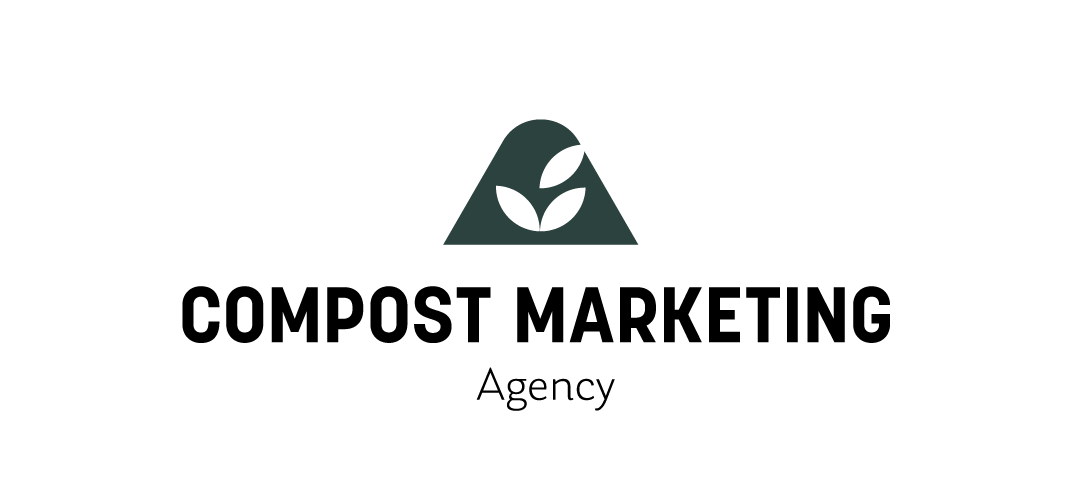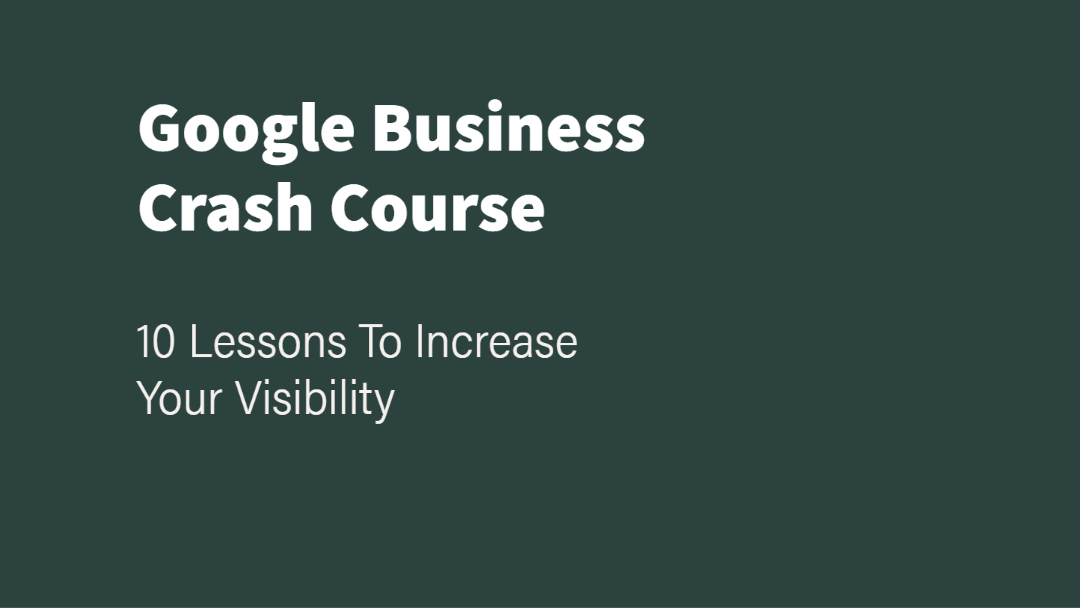Local compost businesses want to be visible on Google. This is the guide to making it happen.
Apply these lessons to your google business profile to see an increase in visibility.
Lesson #1: Google loves itself.
Google is in a contentious love affair with the publishers, website owners, advertisers, and its users. (Check out their recent lawsuit.)
Google gladly doesn’t send traffic to your website. They’d rather show you the information in their own ecosystem. TikTok, Apple, Instagram & Facebook all operate the same way.
Google also likes to spend your full ad budget. They are really good at that.
Google is salty none of their social networks took off. (Remember Google+ ?) They are still trying. They now send out emails encouraging you to aspire to become “a local expert” when all you wanted was to leave a review for a restaurant.
To end this lesson on a positive note: Google is also really good at digging up what we are looking for. That’s why everybody uses it. Thank you, Google, but remember this when working on your internet marketing.
Google loves itself and so should you.
Lesson #2: Google is a high intent platform.
A search for “residential compost service” usually means that the user is looking for a service to pick up their food scraps. That’s high intent.
“Buy compost {city name}” is also a high intent search from someone that needs compost. These types of searches don’t happen on instagram or Facebook. Those platforms are where people get inspired and they might stumble upon you.
Needless to say that people already set on something are much easier new customers for you to acquire. You don’t have to educate them why they need your product and they are usually ready to make a purchase.
Walmart, HomeDepot, and Lowes all offer garden soil and compost, that is a no-brainer for Google, so those show up. If you want to position yourself as an alternative source, you need to be where people are searching for you, when they are ready. So be prepared.
Lesson #3: Google shows business listings before organic listings.
Search results are stacked like this
- Shopping ads
- Paid text ads
- Maps preview, from business listings
- Top 3 Google business listings
- People also ask
- Organic results
With this order of search results it is difficult to get noticed with just a website, even if you rank #1 with your website, which is really hard to do. You need to be on top of your game, invest lots of time and money into search engine optimization, and beat all the other competitors that also want to rank #1. The organic results also include blogs, newspapers and other websites that don’t necessarily compete for the business, just for the real estate in the search results.
The further down you are on the search display stack, the less likely it becomes that the user will see and in turn choose your service or product.
The only realistic chance to get noticed quickly is by entering an auction and to run ads – or with your Google Business listing.
It shows up on Google Maps and, with some luck and effort, you can make it into the top 3 listing display. Oh and talking about Google Maps and the ecosystem, there is a separate app just for Google Maps that people do use to find things. Having a Google Business listing also adds you to those searches.
Lesson #4: Website visits are declining by design.
The non-click rate just increased from 50% to 66%. That means two thirds of Google searches do not end in a click on [YOUR] website. That’s because Google offers the information in the business profiles. The user sees the information and does not need to click to your actual website. They might still interact with your profile, initiate a call, or find directions, but if you don’t have or care for your Google Business listing, chances are very slim.
Statistics from ten years ago show that around 70% of all users clicked on the top 3 organic Google results. With the emergence of Google Business Listings, the click rates have dropped altogether dramatically. Google wants to emulate user behavior, and, in doing so, is only showing a select amount of listings that it deems most relevant to your search. There is a small “view all” button that reveals the rest of relevant business listings but you don’t have to be a rocket scientist to understand that those three results will get the bulk of attention. Lesson takeaway, you need to continue to nurture your Google Business listing.
Lesson #5: Don’t be invisible.
I have broken down how Google stacks the search results and how users interact with them. This lesson is a crystal clear conclusion of lessons three and four.
A lot of businesses make the mistake to google their own name and take the results as proof of their visibility.
However, from a new potential customer’s perspective this looks completely different. Chances are high that they don’t even know your name yet.
Ranking high for your own name is relatively easy. It is also a narrow search phrase and Google understands the intent to find information about it so it is not showing lots of competing results.
Lesson #6: Keep up with your Google Business.
This is an easy lesson. Once you get started, never stop. Make sure to post your opening hours for special holidays and all the other updates that you have been publishing elsewhere.
Google favors listings that get regular fresh content and have up to date information.
This is not a game that is won by winning one game. It is won by the players that keep playing.
Lesson #7: Post your social content on Google Business.
This lesson is all about process. No matter what method you use to currently post to your social media channels, make sure to loop your Google Business profile into the process. Whenever a post, video, or article goes up through your social channels or your blog, make sure to post it to Google Business as well. Integrate Google Business with your social scheduling tool or download the app for ease of use.
Lesson #8: Ask for photos.
Some people call it user generated content, others call it a smart move. While it is great to post pictures to your profile, it is even better when other users post pictures of your business.
There are two primary reasons why I recommend this step:
Your customers usually use their smartphone to take and upload the photo. Maybe you knew this, maybe you did not, but photos are tagged with GPS coordinates and other information that are gathered in what we call EXIF data. By uploading photos from around your service area, Google receives proof of your local footprint and will extend the visibility of your profile. The search is now hyper local. If you search for a car workshop you will only see the workshops that are closest to you based on your location. This is tied to your business address.
When photos pop up all around town, Google will read them as signals of your geographic footprint.
The other reason why photos from your customers are a good way to boost your profile is “social proof” and “social trust”. While businesses are more likely to only show favorable photos of themselves, users will generally upload what is most relevant to them.
In turn, users will trust other people’s photos and thus Google does too.
Lesson #9: Add your services & products.
There is a section that lets you add information about your services and products. It’s a perfect spot to showcase your offering within the Google ecosystem. Think non-clickers. Those now have a chance to see what your company has in store without visiting your website.
It is also a good way to add more context to your listing and fill it with keywords. The Google bot reads your offerings and takes them into consideration before it decides what kind of results it will show. This is where you can get into details and stand out from the big box competitors. Those usually have more pull from their sheer magnitude to begin with, just try to imagine the product index of a HomeDepot.
But those big box competitors also lag behind in taking care of their local business listings. This is where you actually have a chance to outcompete them!
Lesson #10: Enable the messaging feature.
There is a feature that gives users an option to initiate a chat-like conversation with your business. The inquiries can be received in your email inbox and on the mobile app. No matter how you handle customer service, those two options can be seamlessly integrated with your existing process.
Google thinks it is a better service when you offer this option. They also measure your responsiveness and compare it to other businesses. Since Google knows that people are impatient, being a quick responder can give you another edge over your competitors. So please make sure that you use this feature.
This is it for our Google Business Crash Course.
Schedule a call with us if you want a pro tip on how to integrate your Google Business with your website.
It’s implemented on this website. Can you spot it? It’s highly technical but it will send at least 10 signals from this page to our google business listing.
If your business needs help implementing these and other marketing enhancements, get in touch.

